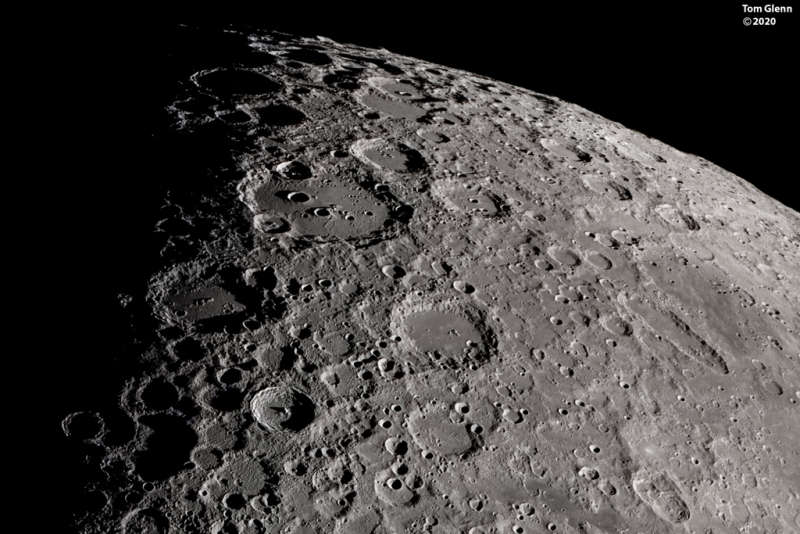
|
Credit & Copyright: Tom Glenn
Explanation:
The Moon's south pole
is near the top of this
detailed
telescopic view.
Looking across the rugged southern lunar highlands it was
captured from southern California, planet Earth.
At the Moon's
third quarter phase the lunar terminator,
the sunset shadow line, is approaching from the left.
The scene's foreshortened perspective heightens the impression of a dense
field of craters and makes the craters themselves appear
more oval shaped close to the lunar limb.
Below and left of center is sharp-walled
crater Tycho,
85 kilometers in diameter.
Young Tycho's
central peak
is still in sunlight, but casts a long shadow
across the crater floor.
The large prominent crater to the south (above) Tycho
is Clavius.
Nearly 231 kilometers in diameter its walls and floor
are pocked with smaller, more recent, overlaying impact craters.
Mountains visible along the lunar limb at the top can rise about
6 kilometers or so above the surrounding terrain.
|
January February March April May June July August September October November December |
| ||||||||||||||||||||||||||||||||||||||||||||||||
NASA Web Site Statements, Warnings, and Disclaimers
NASA Official: Jay Norris. Specific rights apply.
A service of: LHEA at NASA / GSFC
& Michigan Tech. U.
Based on Astronomy Picture
Of the Day
Publications with keywords: Moon - crater
Publications with words: Moon - crater
See also:
